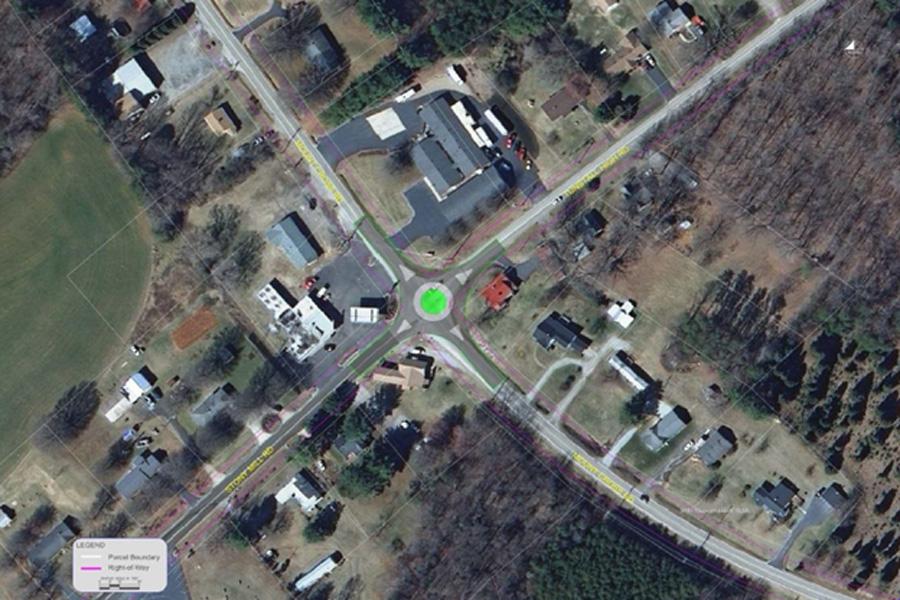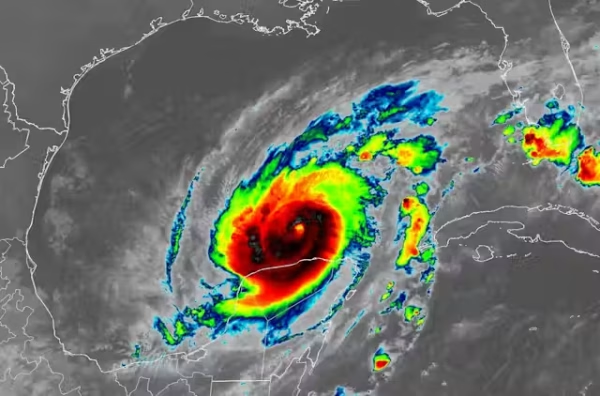Discussing the traffic in a ’roundabout’ way
The traffic is congested during peak hours, mainly on the eastbound approach towards the intersection.
During the years and months preceding May 2014, Virginia Department of Transportation and West Piedmont Planning District Commission had received numerous complaints from the community about the four-way intersection that separates Tunstall High Road, Stony Mill Road, and Mount Cross Road. These series of complaints led both VDOT and WPPDC to conduct a study of the current intersection and the improvements that can be made to it, which was prepared by Kimley-Horn, a design consulting firm located in North Carolina.
The Study: The study conducted consisted of two main objectives: “Determine the safety and integrity of existing transportation infrastructure” and to “provide consensus-based, future recommended improvements that improve safety and mobility for all modes of transportation.”
A main concern that was listed in the study was the high volumes of traffic during peak hours (7:30 – 8:30 a.m. and 2:45 – 3:45 p.m.). The traffic during the morning peak hours had a total number of 1019 of cars pass through the intersection, while the afternoon peak hours consisted of 729 cars passing through the intersection. This high volume of traffic increased concerns by the surrounding community was the considerable reason for this traffic study to take place. In a study conducted in September 2007, it was discovered that the 85th percentile speed for the 25 MPH speed zone around the intersection was 40 MPH. Two solutions were warranted for these issues that the intersection was having: turn lanes or a roundabout.
The Solution: The two solutions both consisted of pros and cons, but the most viable option according to the story would be the roundabout.
The turn lanes were recorded with an even amount of pros and cons:
Pros Cons
The roundabout was overwhelming with positives effects, but some downsides concerning driver failure:
Pros Cons
Not only did the study record that the roundabout would be the most viable option with the affectation on the traffic, but the roundabout would cost approximately $2,090,000. The turn lanes would cost approximately $900,000 more at $2,920,000. This information allowed VDOT to progress the project to the public, which was presented in a meeting open to the local community.
The Meeting: This information meeting “was held on April 22, 2014, at the Tunstall Volunteer Fire Department to gauge public support for the project. Thirty-two individuals attended this meeting, who were of many different occupations, but Layne Mills, the owner of Mills Grill & Grocery (located at the intersection), was “not aware” of this meeting when it was held. The meeting was posted in the local newspaper, as required, but community stakeholders did not feel that they were well-informed about the meeting.
A brief instruction of a roundabout was explained in the meeting as well as the turn lane alternative. According to the vote held at the meeting an overwhelming 19 votes were for the roundabout being instated, while two other individuals selected “no selection.”
Many people who did attend the meeting came in unsupportive of the roundabout, but once the evidence was submitted, they were sufficiently convinced of the merits of adding a roundabout.
The Project: With the support of the local community and the feasibility of the project of a roundabout, the Pittsylvania County Board of Supervisors were ready to move forward with the project, but it never happened. Rick Youngblood, Lynchburg District Planning Manager, stated that the project had been submitted last year, but a new “project prioritization system from the state” (Virginia Smart Scale) aimed “specifically at the environmental factor” which caused the funding to be pulled from the project, being “one of the three in our district to be pulled.”
Youngblood claims that “the board of supervisors was not supportive of resubmitting the application” for 2016.
The direct reason for the resubmission being withheld, Jay Craddock, assistant resident engineer for VDOT, explains that “public support” was not there for the project, so, deriving from that, the board of supervisors did not re-submit the application.
Conclusion of the Project: The possibility of the project going through would seem unlikely now that such opposition was held towards the suggestion of a roundabout being installed. The public support from the meeting deviated largely with the lack of support from the community members that did not attend the meeting. Craddock explains that if the people who oppose the roundabout “had been at the meeting they probably would have supported it,” [the roundabout], and that “they were saying they didn’t support something they don’t know anything about.”
Craddock did explain that there was a chance that the funding “could” be picked up again, but without the support of the local community and the Virginia Smart Scale system being very strict, it does not seem likely.
Your donation will support the student journalists of Tunstall High School. Your contribution will allow us to purchase equipment and cover our annual website hosting costs.

Justin McCune is a senior at Tunstall High School, but is starting as a rookie on the Trojan Messenger staff. Trademarked by his ironic humor and over-happy...















